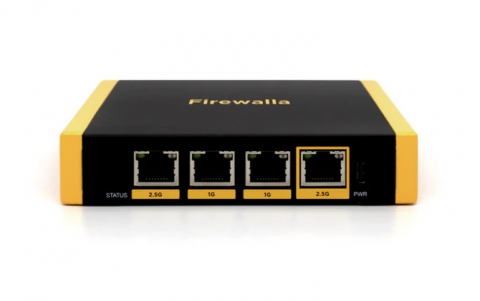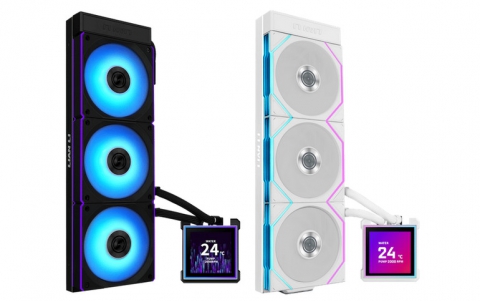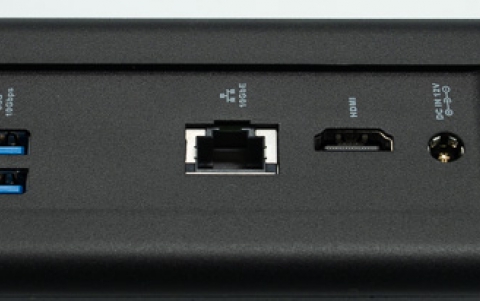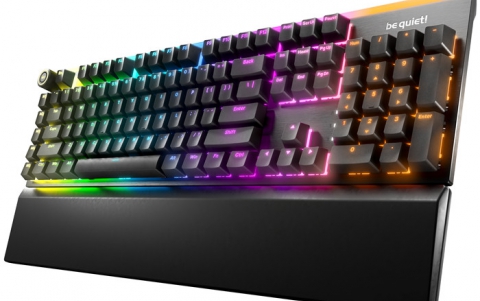
New IBM Chip Simulates Brain Functions
Scientists from IBM unveiled the first neurosynaptic computer chip to achieve a scale of one million programmable neurons, 256 million programmable synapses and 46 billion synaptic operations per second per watt. At 5.4 billion transistors, this fully functional and production-scale chip is currently one of the largest CMOS chips ever built, yet, while running at biological real time, it consumes a minuscule 70mW—orders of magnitude less power than a modern microprocessor. A neurosynaptic supercomputer the size of a postage stamp that runs on the energy equivalent of a hearing-aid battery, this technology could transform science, technology, business, government, and society by enabling vision, audition, and multi-sensory applications.
There is a huge disparity between the human brain's cognitive capability and ultra-low power consumption when compared to today's computers. To bridge the divide, IBM scientists created something that didn't previously exist—an entirely new neuroscience-inspired scalable and efficient computer architecture that breaks path with the prevailing von Neumann architecture used almost universally since 1946.
This second generation chip is the culmination of almost a decade of research and development, including the initial single core hardware prototype in 2011 and software ecosystem with a new programming language and chip simulator in 2013.
The new cognitive chip architecture has an on-chip two-dimensional mesh network of 4096 digital, distributed neurosynaptic cores, where each core module integrates memory, computation, and communication, and operates in an event-driven, parallel, and fault-tolerant fashion. To enable system scaling beyond single-chip boundaries, adjacent chips, when tiled, can seamlessly connect to each other—building a foundation for future neurosynaptic supercomputers. To demonstrate scalability, IBM also revealed a 16-chip system with sixteen million programmable neurons and four billion programmable synapses.
"IBM has broken new ground in the field of brain-inspired computers, in terms of a radically new architecture, unprecedented scale, unparalleled power/area/speed efficiency, boundless scalability, and innovative design techniques. We foresee new generations of information technology systems – that complement today's von Neumann machines – powered by an evolving ecosystem of systems, software, and services," said Dr. Dharmendra S. Modha, IBM Fellow and IBM Chief Scientist, Brain-Inspired Computing, IBM Research. "These brain-inspired chips could transform mobility, via sensory and intelligent applications that can fit in the palm of your hand but without the need for Wi-Fi. This achievement underscores IBM's leadership role at pivotal transformational moments in the history of computing via long-term investment in organic innovation."
The chip was fabricated using Samsung's 28nm process technology.
The event-driven circuit elements of the chip used the asynchronous design methodology developed at Cornell Tech and refined with IBM since 2008.
The new chip is a component of a complete end-to-end vertically integrated ecosystem spanning a chip simulator, neuroscience data, supercomputing, neuron specification, programming paradigm, algorithms and applications, and prototype design models. The ecosystem supports all aspects of the programming cycle from design through development, debugging, and deployment.
Looking to the future, IBM is working on integrating multi-sensory neurosynaptic processing into mobile devices constrained by power, volume and speed; integrating novel event-driven sensors with the chip; real-time multimedia cloud services accelerated by neurosynaptic systems; and neurosynaptic supercomputers by tiling multiple chips on a board, creating systems that would eventually scale to one hundred trillion synapses and beyond.
Building on previously demonstrated neurosynaptic cores with on-chip, online learning, IBM envisions building learning systems that adapt in real world settings. While today's hardware is fabricated using a modern CMOS process, the underlying architecture is poised to exploit advances in future memory, 3D integration, logic, and sensor technologies to deliver even lower power, denser package, and faster speed.





















